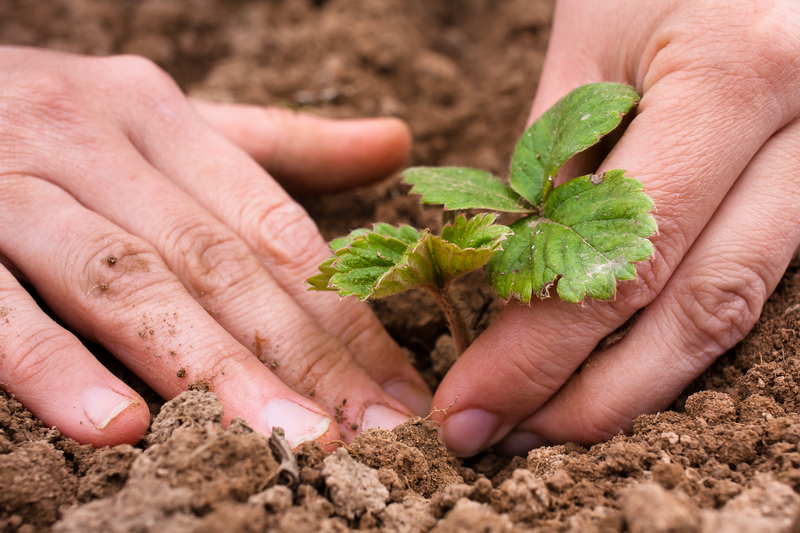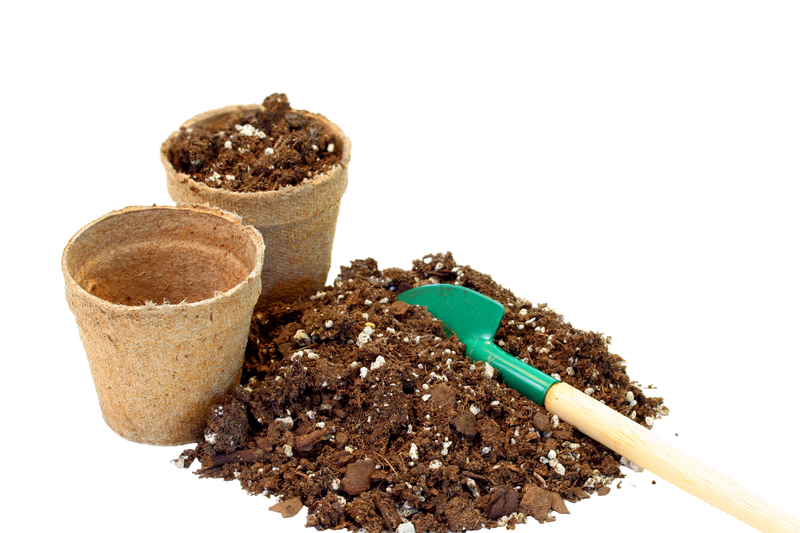Earth-Friendly Gardening: A Step Towards Climate Mitigation
Posted on 09/06/2025
Earth-Friendly Gardening: A Step Towards Climate Mitigation
As people worldwide become more aware of the climate crisis, there's a significant shift towards sustainable living. Among various eco-friendly practices, earth-friendly gardening stands out as a powerful, approachable, and rewarding way to support the planet. By embracing climate mitigation gardening practices, individuals can help reduce environmental impacts while creating beautiful, productive outdoor spaces. This comprehensive guide explains the principles, techniques, and profound impact of adopting an eco-conscious gardening lifestyle.
Understanding Earth-Friendly Gardening
Earth-friendly gardening refers to all landscape and cultivation approaches that focus on reducing harm to the environment, supporting biodiversity, and minimizing the carbon footprint. Unlike traditional gardening, which may rely on synthetic chemicals or non-renewable resources, sustainable gardening works alongside nature. This practice encourages the conservation of water, soil, and native species, and involves mindful decisions that help slow climate change.
Why is Gardening Important for Climate Mitigation?
Plants play a crucial role in absorbing atmospheric carbon dioxide, which is the primary greenhouse gas responsible for climate change. Healthy soil and thoughtful landscaping can act as carbon sinks, capturing and storing carbon while improving local ecosystems. On a community scale, eco-friendly gardening can:
- Enhance biodiversity by creating habitats for wildlife and pollinators
- Improve soil health and water retention, reducing erosion and runoff
- Reduce urban heat islands through strategic tree and plant placement
- Lower chemical and water use, supporting cleaner air and waterways

Core Principles of Earth-Friendly Gardening
Transitioning to climate-conscious gardening involves adopting new maintenance habits and design philosophies. The following pillars of eco-friendly horticulture guide gardeners towards meaningful change:
1. Nurture Healthy Soil
Soil is far more than a simple growing medium--it forms the foundation for resilient gardens and vibrant ecosystems. Sustainable gardening techniques such as composting, mulching, and reducing tillage help maintain and improve soil structure.
- Compost organic waste to return nutrients and support microbial life
- Apply mulch (wood chips, leaves, straw) to retain moisture and prevent weeds
- Avoid chemical fertilizers and synthetic pesticides that harm beneficial organisms
- Practice no-dig or reduced-till gardening to minimize soil disturbance
2. Choose Native and Adapted Plants
Climate-resilient gardening focuses on selecting plants that are suited to the local climate, soil, and wildlife. Native and adapted species typically need less water, fertilizer, and care, making them superior for sustainable landscapes.
- Research regional plant guides for optimal choices
- Support pollinators (bees, butterflies) by planting a variety of flowering natives
- Avoid invasive species which can spread rapidly and disrupt local ecosystems
3. Conserve Water
Water is a precious resource, and earth-friendly landscaping techniques help minimize unnecessary use:
- Install rain barrels to collect and use stormwater for irrigation
- Use drip or soaker hoses to deliver water directly to roots and reduce waste
- Group plants by water needs for efficient watering zones
- Apply mulch to slow evaporation
4. Encourage Biodiversity
A truly sustainable garden is teeming with life. By supporting biodiversity, gardeners promote ecological balance and create havens for birds, insects, and small mammals:
- Plant a wide variety of species that bloom and fruit at different times
- Create habitats with brush piles, rock gardens, and native hedges
- Avoid pesticides and herbicides that harm beneficial wildlife
- Leave some garden beds "wild" or unmown for ground-nesting species
5. Reduce, Reuse, and Recycle Garden Materials
The concept of a low-impact garden extends beyond plants and design. Consider the lifecycle of materials used:
- Reuse containers, plant stakes, and trellises
- Build compost bins or raised beds from reclaimed wood or bricks
- Avoid single-use plastics and opt for biodegradable or recycled alternatives
Effective Earth-Friendly Gardening Practices
If you're ready to make your garden a force for climate action, here are key practical tips for adopting an earth-friendly approach:
Start with a Soil Health Assessment
Great gardens begin underground. Healthy soil teems with life--from microbes to earthworms. Before planting, test your soil's:
- pH level to determine which plants will thrive naturally
- Nutrient content to guide targeted compost applications
- Organic matter percentage to evaluate how much improvement is needed
Amend your soil using homemade compost, aged manure, or organic amendments that enrich rather than deplete the land.
Embrace Sheet Mulching and No-Dig Methods
Rather than turning over and exposing soil, which releases stored carbon, try sheet mulching. Lay cardboard or newspaper over turf, cover with compost and mulch, and plant directly into the layered bed. This gentle gardening technique:
- Suppresses weeds naturally
- Retains soil moisture
- Builds fertile, carbon-rich soil
Use Rainwater and Efficient Irrigation
Smart water use is crucial for sustainable gardening. Invest in rain barrels and drip irrigation systems. Drip lines deliver water directly to root zones with minimal evaporation, while rain barrels reduce dependence on municipal supplies.
Create Pollinator-Friendly Spaces
Bees, butterflies, and birds are vital for fruit and vegetable pollination. To support them:
- Plant a variety of nectar- and pollen-rich flowers
- Maintain a pesticide-free garden
- Provide clean water sources and nesting sites
Plant Trees and Shrubs Strategically
Trees are among the best natural carbon sinks. Choose native species and plant them to provide shade, prevent erosion, and capture carbon. Groupings of trees and shrubs can also create windbreaks, reducing home energy use.
Adopt Composting and Vermiculture
Composting transforms kitchen scraps, leaves, and garden waste into valuable fertilizer. If space is limited, vermicomposting (using worms) can turn food waste into rich castings. These practices reduce landfill waste and greenhouse gas emissions.
Limit Lawn Size and Go Organic
Traditional lawns are resource-intensive. Consider replacing unused turf with wildflower meadows, edible landscapes, or drought-tolerant groundcovers. If you keep a lawn, mow high, leave clippings to return nutrients, and avoid chemicals.
Grow Your Own Food
Edible gardening reduces your food miles and carbon footprint. Herbs, vegetables, and fruit produced at home eliminate packaging, transportation emissions, and often taste superior to store-bought options. Use organic, open-pollinated, or heirloom seeds for the greatest environmental benefit.
The Benefits of Earth-Friendly Gardening
From personal satisfaction to planetary wellbeing, the advantages of earth-friendly gardening are far-reaching:
- Sequesters carbon, helping offset greenhouse gas emissions
- Reduces water, fertilizer, and pesticide requirements
- Creates attractive, resilient landscapes
- Boosts local wildlife and pollinator populations
- Provides healthy, homegrown food
- Fosters community and environmental stewardship
Common Myths About Climate-Friendly Gardening
Despite the many benefits, some misconceptions persist:
- "Organic gardens are messy or unproductive." In reality, natural methods produce stunning, productive spaces.
- "Native plants are boring or limited in variety." Native species abound in beautiful, functional options for every landscape.
- "It's too expensive to garden sustainably." In many cases, earth-friendly techniques save money on water, chemicals, and maintenance.
Community and Policy Support for Earth-Friendly Gardening
While individual action is crucial, broader community initiatives and policies can scale up the impact:
- Organize community gardens and urban green spaces to provide local food, habitat, and education
- Advocate for incentives such as rebates for rain barrels or native plant landscaping
- Support local tree-planting campaigns and "greening" projects
- Educate neighbors and schools about earth-friendly practices

Resources for Eco-Conscious Gardeners
- Local extension services and botanical gardens for plant recommendations
- Regional native plant societies for seeds and advice
- Composting and permaculture workshops for hands-on learning
- Online communities focused on sustainable gardening techniques
Conclusion: Every Garden Can Help the Planet
Earth-friendly gardening is more than a trend--it's a vital step toward climate mitigation and environmental health. By taking simple, intentional steps, gardeners everywhere can make a positive impact on their local and global ecosystems.
From nurturing soil micro-life to planting native wildflowers, every action counts. Not only do sustainable gardens support biodiversity, sequester carbon, and conserve precious resources, but they also provide personal enjoyment, food, and a sense of stewardship for the Earth.
The time is ripe to transform your yard, balcony, or community space into a climate-friendly haven. As more individuals embrace earth-friendly gardening, together we plant seeds for a healthier, more stable climate--one garden at a time.

